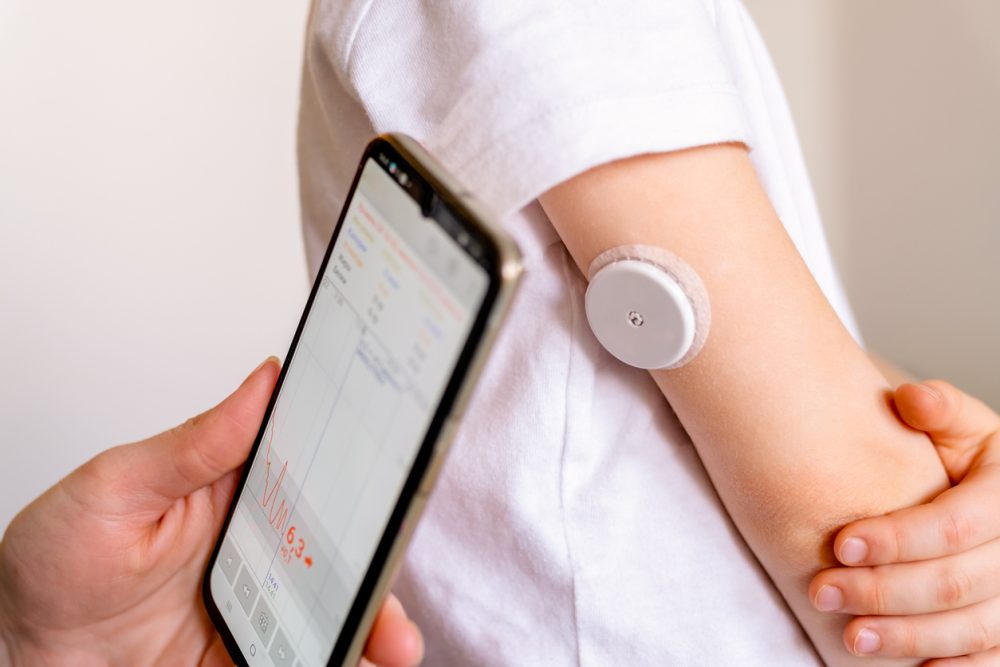Recently, I attended a family gathering, and while we were chatting, my uncle walked into the room with a small circle on his arm, smaller than an Air tag. I asked what he was wearing, and he excitedly showed me how this small device monitors and tracks his glucose levels, translating the data to his phone. The device he was wearing is a GCM. He and his fellow pharmacy techs were given these devices to test for 14 days. With it, he could see what foods were spiking his blood sugar in real time, and it convinced him to change his diet and lifestyle. This led me to think, are real-time glucose monitoring devices a new way to predict issues related to blood sugar?
When I was little, my best friend was diabetic. I remember her having to step out in the middle of class to prick her finger and test her sugars. Her hands were always scarred and bleeding, and for those of us who faint at the sight of blood, that would be a personal draconian nightmare to have to finger prick multiple times a day. Masteringdiabetes.org recommends glucose monitors to provide a more holistic picture of a person’s health, explaining, “fingersticks do not teach you the direction that your glucose is moving – up, down, or sideways – making it challenging to know when to eat, inject insulin, exercise, or take oral medication.” And according to the National Institute of Diabetes and Digestive and Kidney Diseases (NIDDK) at the US Department of Health and Human Services, there are real-time intermittent scan Continuous Glucose Monitoring Devices (CGMs), which connect a biotracker on a person’s arm to smartphones to provide real-time monitoring. Monitors directly transmitting to a smart device are called personal and “real-time.” To access the data, a person can scan their sensor on their arm or stomach with their reader. They can thenview the data on the smart device. Alternatively, some of the newer models will directly transmit the data to the smartphone without the use of a separate reader. According to the NIDDK, “The CGM will create an alert and might display a graphic that shows whether your glucose level is rising or dropping—and how quickly—so you can choose the best way to reach your target range.”
While some GCMs are only compatable with Apple and Android products, the Nutrisense CGM biotracker and app is compatible with the Apple Watch, Samsung Watch/Google Fit, Oura Ring, Fitbit, and Garmin Watch.
A Personal CGM device has three parts:
- A sensor on the skin with a sticky patch to protect it.
- A transmitter on top of the sensor wirelessly transmits “glucose information to a smartphone app, reader, or receiver.”
- A software program on a smartphone, insulin pump, or a separate device called a receiver.
All devices differ, and after approximately two weeks, the device is typically meant to be discarded, and a new one is inserted. According to DiaTribe, a CGM can be picked up at the pharmacy and inserted at home. Note: If a medical professional prescribes and inserts a device, it will remain inserted for much longer and will be monitored by that medical professional.
Smart watches are being used to track health conditions like heart disease, Parkinson’s, and now glucose levels. CGMs can be used for more than diabetes management. It can be used for preventative health measures related to metabolism and glucose levels. Other factors affect a person’s glucose levels, including stress. Signos, a CGM device company, advertises that GCMs can help people become more in tune with their metabolism, lose weight, and manage diabetes. Their device also connects to an app on phones and smart watches for monitoring on-the-go. Over time, keeping your glucose levels in the healthy range can help you stay well and prevent diabetes complications. The people who benefit the most from a CGM are those who use it every day or nearly every day. CGMs can be more accurate in real-time so patients can know their blood sugar status before symptoms appear, improving their quality of life.















